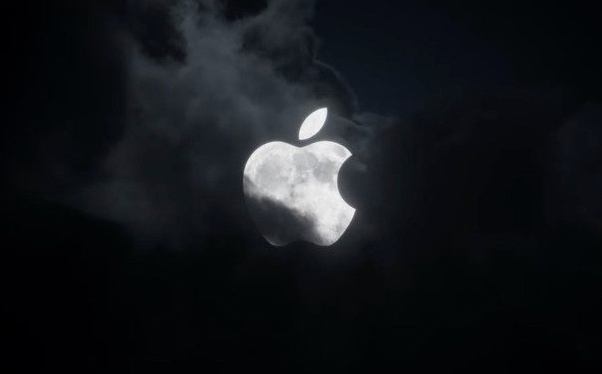How to check compatibility for the latest macOS?
Jul 04, 2025 am 12:12 AMTo confirm whether the Mac supports the latest macOS, you can take the following methods: 1. Check the compatibility list of Apple's official website and check the highest version supported by the specific model; 2. Directly judge whether you are eligible for upgrade through the "About this Mac" and "Software Update" options in the current system; 3. Use third-party tools such as EveryMac.com or Mactracker to assist in checking compatibility. Check in advance to make sure the device supports the new system, avoid installation failures, and recommend backing up data before upgrading.

Before upgrading macOS, confirming whether the device is compatible with the latest system is a key step. Apple launches new versions of macOS every year, but not all Macs can support it. Here are some practical methods to help you quickly determine whether your device supports the latest macOS version.

View official support list
Apple's official website will list the highest macOS versions supported by each Mac. You can check it according to your model. for example:

- MacBook Air 2015 and later models usually support macOS Sonoma
- iMac Pro full series supports the latest version
- If your Mac was released in 2013 or earlier, it is likely that it does not support the latest system
Visit the "Compatibility" page of Apple's official website, or search for "the latest version of macOS supported models" to find the corresponding table. Pay attention to checking your specific model, and don’t just look at the year.
View update options directly in the current system
If you are already using a newer macOS, you can directly determine whether you are eligible for upgrade through the system settings:

- Click the Apple menu in the upper left corner → “About this Mac”
- View the currently running macOS version and device model in the Overview tab
- Open System Settings → General → Software Update
- If there is "Available Update", it means that your device is within the support range; if there is no prompt for updates, it may not be supported.
The advantage of this method is that you don’t need to check the information, the system will automatically tell you the results. However, the premise is that your network is normal and the system can also be connected to the Apple server.
Use third-party tools to assist in judgment
If you don't want to mess with the official website or system settings, you can also use some third-party tools to quickly detect compatibility. For example:
- EveryMac.com : Enter your Mac model or number and it will list the highest supported macOS version in detail
- Mactracker (Mac/iOS application) : provides detailed hardware information and system support
The data source of these tools is usually the summary of information published by Apple, which is highly accurate and suitable for people who are not very familiar with technical operations.
Basically these are the methods. Check compatibility in advance to avoid the situation where the installation package cannot be installed after downloading. In addition, even if the device supports it, it is recommended to back up the data first and then upgrade the system.
The above is the detailed content of How to check compatibility for the latest macOS?. For more information, please follow other related articles on the PHP Chinese website!

Hot AI Tools

Undress AI Tool
Undress images for free

Undresser.AI Undress
AI-powered app for creating realistic nude photos

AI Clothes Remover
Online AI tool for removing clothes from photos.

Clothoff.io
AI clothes remover

Video Face Swap
Swap faces in any video effortlessly with our completely free AI face swap tool!

Hot Article

Hot Tools

Notepad++7.3.1
Easy-to-use and free code editor

SublimeText3 Chinese version
Chinese version, very easy to use

Zend Studio 13.0.1
Powerful PHP integrated development environment

Dreamweaver CS6
Visual web development tools

SublimeText3 Mac version
God-level code editing software (SublimeText3)

Hot Topics
 How to handle high DPI display in C?
Apr 28, 2025 pm 09:57 PM
How to handle high DPI display in C?
Apr 28, 2025 pm 09:57 PM
Handling high DPI display in C can be achieved through the following steps: 1) Understand DPI and scaling, use the operating system API to obtain DPI information and adjust the graphics output; 2) Handle cross-platform compatibility, use cross-platform graphics libraries such as SDL or Qt; 3) Perform performance optimization, improve performance through cache, hardware acceleration, and dynamic adjustment of the details level; 4) Solve common problems, such as blurred text and interface elements are too small, and solve by correctly applying DPI scaling.
 How to uninstall MySQL and clean residual files
Apr 29, 2025 pm 04:03 PM
How to uninstall MySQL and clean residual files
Apr 29, 2025 pm 04:03 PM
To safely and thoroughly uninstall MySQL and clean all residual files, follow the following steps: 1. Stop MySQL service; 2. Uninstall MySQL packages; 3. Clean configuration files and data directories; 4. Verify that the uninstallation is thorough.
 Detailed explanation of the installation steps of MySQL on macOS system
Apr 29, 2025 pm 03:36 PM
Detailed explanation of the installation steps of MySQL on macOS system
Apr 29, 2025 pm 03:36 PM
Installing MySQL on macOS can be achieved through the following steps: 1. Install Homebrew, using the command /bin/bash-c"$(curl-fsSLhttps://raw.githubusercontent.com/Homebrew/install/HEAD/install.sh)". 2. Update Homebrew and use brewupdate. 3. Install MySQL and use brewinstallmysql. 4. Start MySQL service and use brewservicesstartmysql. After installation, you can use mysql-u
 macOS: System Architecture and Core Components
Apr 28, 2025 am 12:05 AM
macOS: System Architecture and Core Components
Apr 28, 2025 am 12:05 AM
The system architecture of macOS includes hardware abstraction layer, XNU core, I/OKit, core services and Aqua user interface. Core components include the startup process, the APFS file system, and SystemIntegrityProtection. Performance optimization and best practices involve hardware configuration, software setup, and development skills.
 laravel installation code
Apr 18, 2025 pm 12:30 PM
laravel installation code
Apr 18, 2025 pm 12:30 PM
To install Laravel, follow these steps in sequence: Install Composer (for macOS/Linux and Windows) Install Laravel Installer Create a new project Start Service Access Application (URL: http://127.0.0.1:8000) Set up the database connection (if required)
 macOS and Linux: Compatibility and User Experience
Apr 30, 2025 am 12:05 AM
macOS and Linux: Compatibility and User Experience
Apr 30, 2025 am 12:05 AM
macOS and Linux have their own advantages in compatibility and user experience. macOS has excellent compatibility within the Apple ecosystem, and the user experience is simple and intuitive; Linux has outstanding hardware compatibility and software flexibility. The user experience varies from distribution to distribution, emphasizing personalization and control.
 How to check the warehouse address of git
Apr 17, 2025 pm 01:54 PM
How to check the warehouse address of git
Apr 17, 2025 pm 01:54 PM
To view the Git repository address, perform the following steps: 1. Open the command line and navigate to the repository directory; 2. Run the "git remote -v" command; 3. View the repository name in the output and its corresponding address.
 What are the cross-platform development environments in C?
Apr 28, 2025 pm 09:24 PM
What are the cross-platform development environments in C?
Apr 28, 2025 pm 09:24 PM
Cross-platform development in C is recommended to use VisualStudioCode, CLion and QtCreator. 1. VisualStudioCode is lightweight and flexible, suitable for multi-platform development, but the initial configuration is more complicated. 2. CLion integrates CMake, suitable for cross-platform projects, but licenses are expensive. 3.QtCreator supports cross-platform development, with built-in Qt library, but the learning curve is steep.






